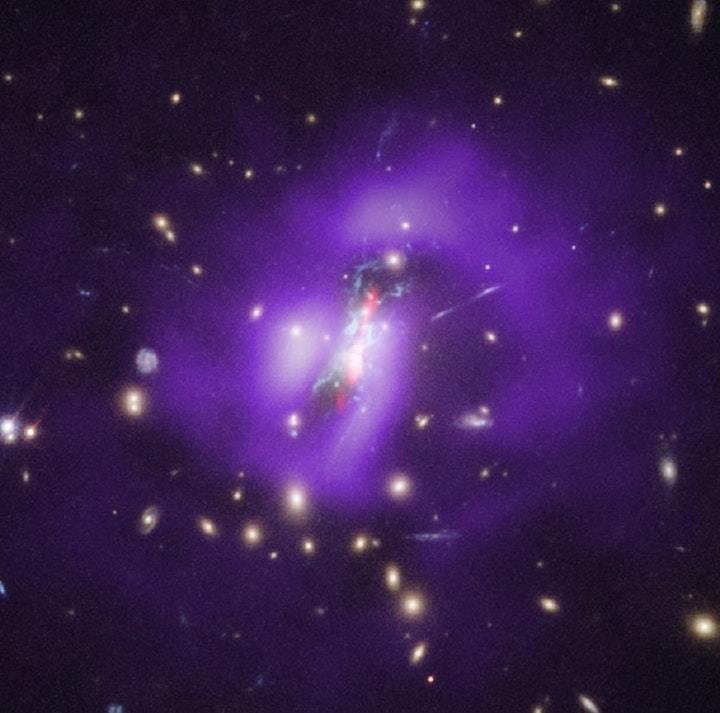20.11.2019
New data provides compelling evidence of a unique phenomenon.

A combined x-ray, optical and radio image reveals the mechanism allowing rapid star formation at the core of the Phoenix Cluster.
Astronomers have confirmed the first example of a galaxy cluster where large numbers of stars are being born at its core.
Galaxy clusters consist of hundreds or thousands of galaxies embedded in hot gas, as well as invisible dark matter. The largest supermassive black holes known are in galaxies at the centres of these clusters.
For decades, astronomers have looked for galaxy clusters containing rich nurseries of stars in their central galaxies. Instead, they found powerful, giant black holes pumping out energy through jets of high-energy particles and keeping the gas too warm to form many stars.
Now, a team led by Michael McDonald, from the Massachusetts Institute of Technology, US, says it has compelling evidence for a unique galaxy cluster where stars are forming at a furious rate, apparently linked to a less effective black hole in its centre. The jets from the central black hole appear to be aiding in the formation of stars.
The findings are reported in The Astrophysical Journal.
“This is a phenomenon that astronomers had been trying to find for a long time,” says McDonald. “This cluster demonstrates that, in some instances, the energetic output from a black hole can actually enhance cooling, leading to dramatic consequences.”
The galaxy cluster is called the Phoenix Cluster, and it is located about 5.8 billion light-years from Earth in the Phoenix constellation.
The large galaxy hosting the black hole is surrounded by hot gas with temperatures of millions of degrees. The mass of this gas, equivalent to trillions of Suns, is several times greater than the combined mass of the stars in all the galaxies in the cluster.
